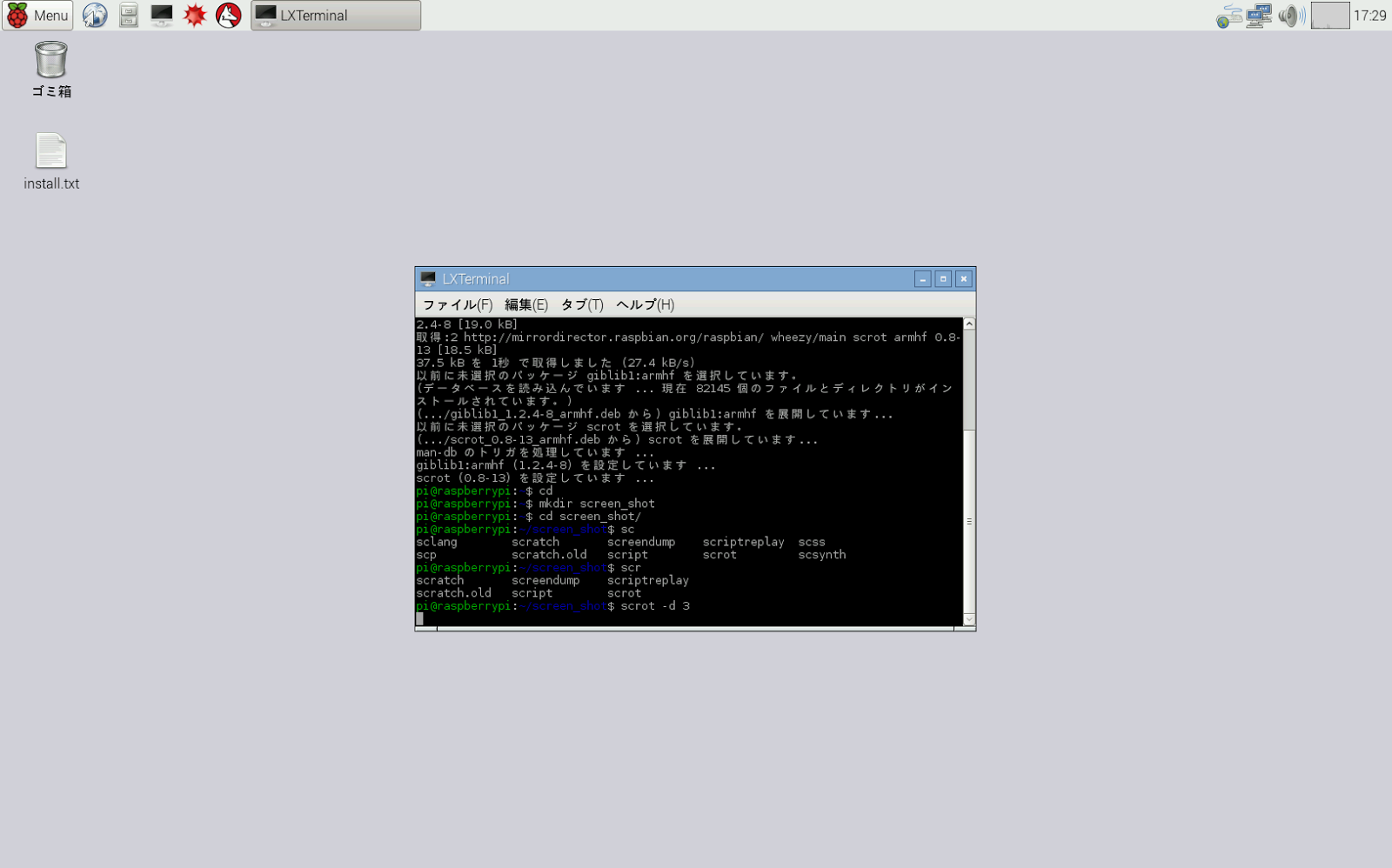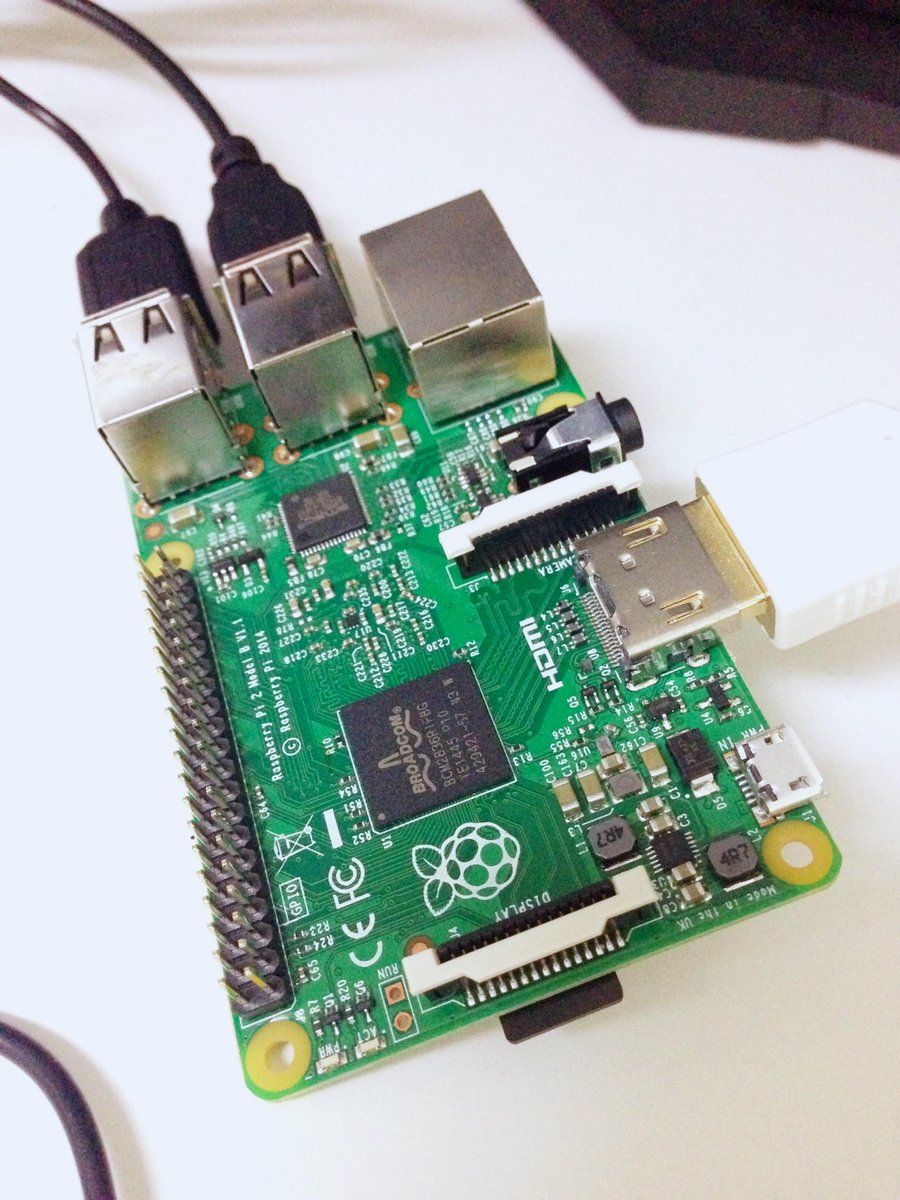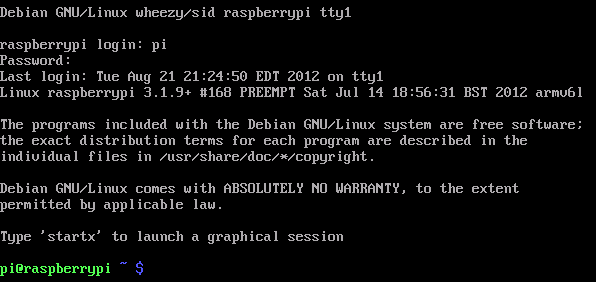

- #Raspberry pi gui startx install
- #Raspberry pi gui startx update
- #Raspberry pi gui startx code
- #Raspberry pi gui startx license
- #Raspberry pi gui startx download
Add Basic Python CodeĬreate a new Python file in the same directory as your mainwindow_auto.py, with this initialization code.
#Raspberry pi gui startx code
This code will run and create a GUI, but that’s not quite enough yet. Okay, you’re asking, are we done yet? Do we have a GUI? Yes and no.
#Raspberry pi gui startx update
Each time you update the GUI in QtCreator, you’ll want to run pyuic5 to update the “auto.py” file. Name the result whatever you want, I keep the name mostly the same. On Mac and Unix, here’s your command: pyuic5 mainwindow.ui > mainwindow_auto.py In a terminal (or command shell for Windows), we’re going to make use of the pyuic5 utility. Now, don’t worry if your GUI isn’t “done.” You can repeat the following steps as many times as you want. Once you have drawn your GUI elements, it is time to generate the matching Python code.
#Raspberry pi gui startx download
You CAN change it in your code, but why not set it now? Create the GUI Code Download Tutorial Code For example “PushButton” is a label text for the button. Set DefaultsĮven if you plan for your program/script to fill in values in the GUI, make sure you set appropriate defaults. In this code, I created two buttons On and Off named btnOn and btnOff respectively. Start a new project in QtCreator and select “Desktop Application.”ĭon’t stick to the default widget names QtCreator provides. After that, it’s just a matter of copy/paste to get a GUI up and running. You can download that from Qt, after answering some questions about how you plan to use it.īelieve it or not, I think getting python3, Qt5, and PyQt5 installed is the hardest part.
#Raspberry pi gui startx install
On the PC you plan to develop from, download and install QtCreator. I’m no apt-get expert, but python3-pyqt5 might be enough to drag along python3. Raspberry Pi InstructionsĪssuming you’re running Raspian Jessie, you can install all three with apt-get: sudo apt-get install python3 python3-pyqt5

The PyQt5 download page has binaries for Windows. Next, you need PyQt5, which installation varies by operating system. However, I like that with the homebrew install they can find each other. If you know all the directories, you can probably get away without re-installing these. I don’t have much to say about Windows or Linux but on the Mac, install python3 and Qt5 with homebrew. Whether you’re on a Mac, Windows, or Linux, get python3 and Qt5 installed. I ran into problems and decided to use python3 instead. It wasn’t clear to me if Qt5 worked with the python2.7. In my case, I found it pretty easy to duplicate the Python/Qt environment on both. So I wanted to use my laptop “for development” and then deploy the code to my Pi when done. While the Raspberry Pi is a perfectly capable computer, I found developing on a 3.2” TFT a bit cumbersome. If you want “pure” open-source, then you might be happier with wxPython. Qt is modern, and it’s free (since I’m not developing anything commercial.) I know even the mere mention of “commercial” will cause some people to turn away.
#Raspberry pi gui startx license
PyQt is available as GPL or Commercial License while Qt is available under LGPL or Commercial license. I decided on the PyQt binding from Riverbank to go along with Qt5.

Having a little bit of familiarity with Qt, I looked into its Python bindings and was happy. You could write on it, and it’d save what you write, about ten years before Apple did it. In college, I used Qt for my senior design project: an electronic notebook. However, I had some trouble getting wxGlade running, which is a WYSIWYG GUI editor. The UI widgets have a modern feel, though they not entirely native-looking. The other toolkit I considered was wxPython. I decided not to use it though because the widgets have a very dated look to them. If you have Python running on your system, you have TkInter. Not listed there is TkInter, which is the most used Python toolkit. If you start with this article on, you’ll find five potential python toolkits. Here is how I got Qt5 for Python up and running to create a Raspberry Pi GUI. “Ready to go” means they install easily on Raspian and work well on the Pi. Python is popular in Pi projects, so I decided to stick with it and find out what GUI toolkits are ready to go. So what could I do to create a Raspberry Pi GUI? The problem is I didn’t know much about writing GUI applications in Linux. The Pi+Screen will act as the primary controller for all of my things. This screen is what I needed for my IoT project.


 0 kommentar(er)
0 kommentar(er)
